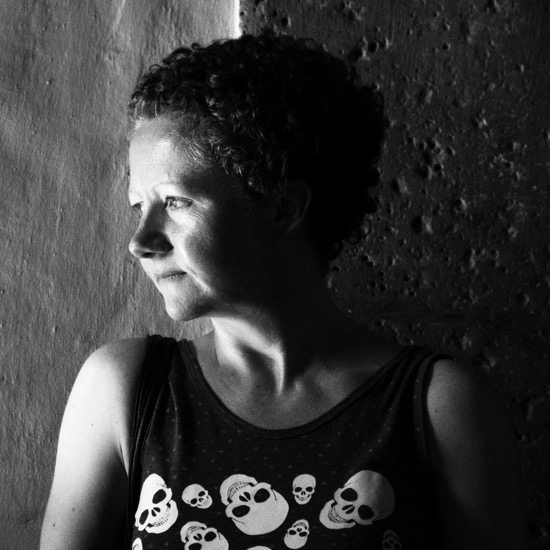Day 1
- November 1st
Registration
Serving barista coffee to get your heart, and mind, started.
Welcome

Opening Keynote
Mark Pesce, inventor, author, broadcaster
Morning Break
Fully catered, with great coffee, and the chance to connect with your peers.

How adopting GraphQL will make your organization better / faster / stronger
Peggy Rayzis, Engineering Manager Meteor
GraphQL is being adopted throughout the industry, and for good reason. In this talk, we'll explore some of the use-cases and success stories of top companies as they've made the move to GraphQL. We'll also offer guidance as to how to move through the phases of adoption at your company.

Designing Across Cultures
Yiying Lu Most Creative People 2018 Fast Company
In this talk, Yiying Lu will share her 10 years of cross-cultural design practice for global brands such as Disney, Twitter, Wasabi Warriors and others. She will tell the visual stories of the Twitter Fail Whale and the official Dumpling Emoji.
She will also share her creative process on how she overcomes design challenges when working on bilingual creative projects such as the Shanghai Disney Recruitment Campaign, Australian-Chinese real estate brand Home789, and localize global brand 500 Startups for the Korean and Indian market, and so on. Join Yiying on a journey of exploring cross-cultural creativity through colorful logos, whimsical illustrations, symbolic typography designs with occasional puns & jokes.

Machine learning for front-end developers
Charlie Gerard, Software Developer ThoughtWorks
Machine learning can have some pretty complicated concepts to grasp if you’re not a data scientist. However, recent developments in tooling make it more and more accessible for developers and people with little or no experience.
One of these advancements is the ability to now train and run machine learning algorithms and models in the browser, opening this world to front-end developers to learn and experiment.
In this presentation, we will talk about the different applications, possibilities, tools and resources, as well as show a few examples and demos, so you can get started building your own experiments using machine learning in JavaScript.

Design For Transparency
Tim Buesing, Group Design Director Fjord
Lunch
We've got something very special lined up for lunch. But you'll have to come to find out,

To push, or not to push?!
Mark Nottingham Principal Engineer Fastly
HTTP/2 server push gives us the ability to proactively send assets to a browser without waiting for them to be requested. Sounds great, right?!
However, is this new mechanism really the silver bullet we all thought it was? Is it time to abandon our build systems and stop bundling our assets entirely? Or are lack of server support and browser inconsistencies holding us back? Lastly, what are new specifications such as cache digests and the 103 status code doing to improve the situation?
Using new research and real-world examples, this talk will take a deep dive into HTTP/2 server push, exploring the current and future best practices for loading assets in the browser. Giving us the knowledge to make better decisions when loading our web pages and ultimately leading to faster, more resilient user experiences.

Speaking with Machines: Conversation as an Interaction Model
Joe Toscano, Founder Design Good
The past few years have been filled with chatbot experiments—some brilliant, many not—but the future has yet to be experienced. As artificial intelligence capabilities advance, conversation will become the next major interaction model, not just a messenger experience.
This talk will explain why conversation will play such a large role in the future, define how it will happen, and suggest how you can integrate conversation into your product roadmap.

Keep Your Errors Close
Rob Howard, Web Factotum
Sometimes you write code that doesn't work. If you're lucky, you notice immediately; if you're NOT so lucky, then you might not notice until it's all the way into your customers' hands when... BANG! NoMethodError on undefined TypeError DANGER DANGER, etc.
What this talk is about is how to discover errors as soon as possible, and why doing that is valuable. Focusing on JavaScript, we'll have a practical look at how we can structure our code (to avoid propagating errors) and what tools we can use (linting, tests and types) to avoid these nasty surprises.

Things designers and devs should know
Ben Buchanan, Engineering Lead Quantium
For a while during Design18 this was the top tweet... https://twitter.com/200okpublic/status/984295887424839682 ...it seems to have struck a chord. So, this talk expands on what I meant. The talk goes through things designers and devs should know about their counterparts; from the history and movements of their respective crafts (OO and FP are different, pop art and minimalism are different..) to specific tools and techniques they should know (eg. devs should know about colour theory, designers should know about versioning and release cycles).
Yes, designers should code. Yes, devs should design. No, neither one needs to do that to production quality unless they really want to go all-in (with a shout out to Diana McDonald... there is crossover here).
Bringing it together at the end I would be talking about how design and dev should be working together throughout the process; and the golden rule of collaborative knowledge - "learn about others as you'd have them learn about you".
(If the crossover with Diane's talk is too much; I could extract the design-for-dev stuff for Code instead. But I would love to do the inclusive both-sides version. Also I'd try to back up my anecdotal material by putting a survey out there to ask other people what they wish their counterparts knew.)

Securing the Web in 2018
Erwin van der Koogh, Founder Bitgenics
JavaScript starting out as a way to make our web pages a bit more interactive, but over the past few years morphed into unmissable pillar of the web. But with it rise in popularity so have the attack vectors on our code.
Luckily there has been a lot of improvements into the security mechanisms available to us. Unfortunately almost all of them require us to take action.
In this talk we will go over all of the recent additions to the browser security stack and how you can massively increase the security of your site with relatively little work.

Turning stories into websites
Donna Benjamin, Executive Director Creative Contingencies
The user story sits at the centre of most agile development methodologies. But what makes a good story? and where do stories come from? What do we do with them once they've been estimated, prioritised, re-sized and broken down? How can we maintain our sense of the big picture when it's broken down into tiny puzzle pieces? How does that help us build good products?
This talk puts the focus on the "user" telling the story to understand their requirements for the product. It then turns back to the team to look at how we hear and discuss those stories in order to bring them to life to build the product, and build it right.

World-class frontend engineering at scale
Nadia Makarevich, Senior JavaScript Developer Atlassian
How do you scale your codebase? We have more than 80 apps, 150 developers in 4 different countries and more than 700k LOC. With the codebase that big it's vitally important to have shared patterns, principals and standards and it's even more important to make sure everyone actually follow those standards.
Learn about the strategies and tools that Atlassian has developed to create and support a high-velocity, high-quality engineering environment, challenges and obstacles that we had to overcome and hoops that we had to jump through on the way.

Even more accessible! What WCAG 2.1 means for designers
Allison Ravenhall, Digital accessibility consultant Intopia
The W3C published its updated accessibility standard (WCAG 2.1) in June. What does it mean for designers? See how the new criteria affect layout and interaction design, including a shoutout to touchscreen devices (finally!)
Afternoon Break
Need more coffee? Or an increasingly hip tea? We've got you covered, plus a sweet afternoon pick-me-up.

Keynote
Maria Giudice, Design Leader Hot Studio
Happy Hour (and a half)
Share a drink, a bite, and a chat with your peers, at a venue close by.
Speaker Dinner
Gold ticket holders join our speakers for fine food and conversation right near the reception venue.
Day 2
- November 2nd
Heart Starting
Serving barista coffee to get your heart started for another day of amazingness.
Welcome back

Philosophy, Ethics and Design
Oliver Reichenstein, Founder Information Architects
Lately, we hear a call for more ethics in design. Ethics is a philosophical notion that allows us to rationally question a highly irrational dimension of our lives: the morality of what we do. As a philosophical discipline, ethics it doesn’t solve problems, it makes us think about them without too quickly falling for what we feel. Ethics won’t solve problems it will clarify them and offer unexpected paths forward. Ethics can give us some hints when it comes to philosophical questions. Ethics will make us see freedom of will, freedom of action or freedom of speech in a different, brighter light. Philosophy is unsettling. It makes you realize how little you understand of what you think you know. Yes, you are human and you enjoy freedom, but few people have something enlightening to say about it. Philosophers like Plato, Kant and Jaspers have thought more and deeper about freedom than you and me. But reading Kant is like reading Einstein's Relativity theory. It may be full of light, but for the untrained it stays dark.
Surprisingly, aesthetics might have more answers to that than it seems. In everyday language aesthetics is a treated as superficial meaningless quality of pleasing objects. Economically, aesthetics are a characteristic of luxury. Aesthetic objects communicate: "I am expensive!" But when you focus on philosophical depths of what we call beautiful, it may at times reveal that is is related to what is good. Somehow, what is truly good is also beautiful and what is truly beautiful is good. It's not a direct relationship, it's a deeper connection, or a relationship higher up, outside the platonic cave, in the stark light of the blinding sun. It may very well be that aesthetics and not the magic belief in artificial intelligence will turn out to be the key to a more humane design.
Morning Break
Fully catered, with great coffee, and the chance to connect with your peers.

The Future of Web Design Part I: Layout
Rachel Andrew, Editor in Chief Smashing Magazine
As we head into the final quarter of 2018, let’s take a look at where we are with CSS Grid Layout, and CSS layout in general. In this talk you will learn the key elements of layout. The things you need to know as you plan your projects now and into the next year.
Rachel will take you on a tour of what we have now and what is coming next, with plenty of practical advice and takeaway code examples, so that you can start to use these features in your own work.
- What are the key things we have learned since Grid landed in browsers in March of 2017?
- How have websites started to use Grid? How does it fit together with the rest of layout?
- What new features are landing that we can take advantage of?

Metaphors in UX Research and Analysis: A Secret Superpower
Cyd Harrell, former Cheid of Staff 18F
Metaphor is one of our most powerful innate capacities as humans, and unlocking its power in UX research work can bring us to a whole new level of insight and stakeholder engagement. Metaphor is a lot like sketching - most people wouldn’t identify themselves as skilled with it. But almost everyone can use it productively with a little bit of attention and practice.
Cyd’s talk will illustrate how to use your metaphorical capacity to do great qualitative analysis. She’ll dig into how to source apt metaphors from users and from your team, how to use them as pointers into the salient parts of a mountain of qualitative data (interview transcripts, for example), how to evaluate which ones are useful, and how to combine them in clusters to get at deep insights. Finally, she’ll show how to share metaphor-driven insights with stakeholders so that design and dev teams can come together and create great experiences.

The Future of Web Design Part II: Variable Fonts
Mandy Michael, Development Manager Seven West Media
The web is entering a new era of design opportunities with the introduction of CSS Grid, Photoshop like effects such as filters and blend modes and importantly the increasing support for Variable Fonts. What practical and creative opportunities do variable fonts offer us? What are the benefits over standard fonts? How can we use them in our web projects?
Lets explore the practicalities and possibilities of Variable Fonts on the web and what we can do to make the most out of them.

The Untold Benefits of Ethical Design
Holger Bartel, Founder Colloq
Ethics need to be at the core of everything we build. We have to consider our impact and rethink how to build digital products. This way we will not only build more responsible products, but gain additional benefits in the areas of performance, security, privacy and user happiness. This talk will show how to truly care about users & improve the user experience at the same time. Most importantly, this talk will be a technical inspiration, question the status quo and help us build for a better web.
Lunch
Like everything else we do, expect the best conference food you'll have anywhere, and plenty of it.

Compiling for the Web with WebAssembly
Alex Danilo, Developer Advocate Google
WebAssembly is a fast, portable, compact, cross-browser binary format for compilation to the Web. It allows new types of applications and heavy 3D games to run efficiently in browsers. We'll describe what web assembly is, the problems it solves, the low level format and compilation tools available to try it out. In addition, the interfacing between compiled language modules and Javascript is explained.

Your Face Here
Jennifer Hom, Experience Design Manager Airbnb
Come for a walk through the development process of Airbnb's illustrative aesthetics–describing their philosophies on color, representation, and editorial voice. Jennifer will even discuss how superstitions helped localize the style for Airbnb in China.

beyond-stringly-typed
Jared Wyles, Senior Computer Scientist Adobe
Ever gone to a website only to click a link and have it turn out like the talk title? Or written code that introduced this bug? Can types prevent this? Absolutely! Stringly typed is a term that defines most peoples usage of of types today, thanks to a horrible introduction through Java at uni.
Through real world examples that nearly every developer will have hit in their career, we can start to move beyond stringly typed code to make impossible states impossible before they become bugs for our users, or even before we run the code or tests. Along the way you will learn how some terms like 'Parametricity' have real world applications and not just the work of academics and will actually help you write bug proof code that is easier to reason about, and understand.

Building a compelling case for a Design System
Laura van Doore, Senior Product Designer Fathom
Design Systems have reached peak popularity. It’s no secret that the topic of Design Systems have been an outrageously popular topic over the past few years. Every design team has either built one, is building one, or wants to build one. But it’s not designers who we have to convince when it comes to investing in the build of a design system. Especially if we aren’t lucky enough to be in an organisation where design has a ‘seat at the table’. How can we sell the benefits of a design system with more focus on appealing to upper management, who may not see the same benefits we do?

What's in the box?
Alex Reardon, Principal Engineer Atlassian
Understanding the css box model is critical for building flexible and accurate abstractions. However, interacting with it in JavaScript is extremely confusing. This talk will explore the various positioning apis such as getBoundingClientRect, offsetTop, scrollWidth and so on - what they measure and how to get them to work together.

Factoring human behaviour into our digital workplace designs
Amanda Broomhall, Managing Partner ABCW
We often take short cuts when we do our designs and end up copying others or relying on what we think are ‘best practice’ concepts. While this is often enough, if we don’t question what is best practice or do our own research we may not achieve usable outcomes.
Most of us are aware of the ‘F reading’ pattern, but are there other common human behaviours that we should be including in our designs?
In this talk, Amanda will look at a few ideas from other disciplines, such as anthropology, neuroscience and psychology that should be considered when designing internal user interfaces.

The truth behind Virtual DOM
Anh Pham, Founder atschool.live
What's the problem?Virtual DOM (React, Vue.js, Angular and the like) is a question which most web engineers have heard of before. If you are one of those engineers, then you probably think that Virtual DOM makes DOM faster when it comes to updating. But however, that idea is a misconception. That's not what Virtual DOM is supposed to be. Let's delve a little deeper into the myths and misconceptions around the virtualDOM.
Part 2: If it is not for fast-updating and fast-rendering, then what does it do?We'll first examine on how DOM creation and update happens when manually doing it. By going through the process of creating and updating DOM, we would have a deep understanding of how DOM works in order to see what Virtual DOM can do for us. After showing some glitches of the DOM, we will be going into Virtual DOM world and knowing what it is capable of. Having done all, we could come to a conclusion that with the help of Virtual DOM, the DOM updating and creating side would be as efficient as possible whereas we would have to do more work on JS side.
Part 3: Is it worth using Virtual DOM?There are many good things about Virtual DOM but massive performance is not one of them. The difference between DOM and Virtual DOM is similar to coding Python or Javascript versus coding in C or Pascal. Hence, there is always a trade-off. Also, with Virtual DOM, we would have to spend more time to examine what part in Virtual DOM we have to handcraft (explain and link with Part 2). For some parts that require a lot of performance, it is not even possible to do so (link with Part 2). Therefore, Virtual DOM is just one of the available tools for us to use at our own convenience.

Word Design 101
Georgina Laidlaw, Content creative Freelance
The presentation shows designers how to approach word design using a simple step-by-step process. It then introduces them to the tools and concepts they’ll need to do it well.
They’ll learn how to use language globalisation guidelines; reading level calculators; and design, language, and brand style guides in the writing process. They’ll also learn the elements of tone of voice, the impact of grammar on emotional connection, when (and when not) to reach for the thesaurus, and more. In 20 minutes, we'll unpack the challenge of word design in a pragmatic way that empowers participants to do it better, starting today.
Afternoon Break
Need more coffee? Or an increasingly hip tea? We've got you covered, plus a sweet afternoon pick-me-up.

The Experimental Future
Caroline Sinders, Design Researcher
What is the future of product design using experimental technology from blockchain to voice commands, AI, and IoT? This talk covers what the future of ethical product design can be? Why and when should we use blockchain, or AI, or IOT? What are design principals we should keep in mind for creating with new technology? Instead of building future worlds imagined in the '60s during the Space Race, what is the future now, and how can we build it?
Farewell
Time to reflect on the last two days, before heading back to work, super-charged to do even more amazing things in 2019.
Our venue
Web Directions Summit 2018 returns to our longtime home, the International Convention Centre in Darling Harbour.
Getting there:
There are numerous public transport options, and parking available on site.
Accommodation:
If you're coming from out of town, there are many hotel and serviced apartment style accomodation options in Darling Harbour, and otherwise close by.
Partners
At Web Directions we work closely with partners to help make our events even better. Sponsor our coffee, reception, recharge station, or other valued activities and start or grow your relationship with our highly qualified audience.
Contact us for more on how we work can work with you to help you be even more awesome.
Key Partners
Devtools Showcase
Partners
Praise for past Web Directions events

Web Directions is the must-attend event of the year for anyone serious about web development.
Phil Whitehouse,
Innovation Lead DigitasLBi

I’ve been admiring the Web Directions events for years, and was honored to be part… What a fantastic event!
Ethan Marcotte,
inventor "responsive Web design"

Out of any conference, Web Directions is far and away our favourite
Dave Greiner,
founder Campaign Monitor
About Us
Co-founded and now run by John Allsopp, Web Directions has for nearly 20 years brought together leading developers, engineers, visual, IxD, UX and product designers, Art and Creative Directors, product managers indeed everyone involved in producing web and digital products to learn from one another, and the World's leading experts across this vast field.
We spend our lives thinking about what comes next, keeping up with trends in technology, practices and processes, and filtering the hype, to make sure you don't miss trends that matter, and don't waste time on hype that doesn't.
We promise attending one of our events will leave you significantly better versed in the challenges you face day to day, and in solutions for addressing them.

John Allsopp
John Allsopp has been working on the Web for nearly 30 years. He's been responsible for innovative developer tools such as Style Master, X-Ray and many more. He's spoken at numerous conferences around the World and delivered dozens of workshops in that time as well.
His writing includes two books, including Developing With Web Standards and countless articles and tutorials in print and online publications.
His "A Dao of Web Design" published in 2000 is cited by Ethan Marcotte as a key influence in the development of Responsive Web Design, who's acclaimed article in 2010 begins by quoting John in detail, and by Jeremy Keith as "a manifesto for anyone working on the Web".
Code of Conduct
For over a decade, we've worked hard to create inclusive, fun, inspring and safe events for the Web Industry.
As part of our commitment to these values, we've adopted a code of conduct for all involved: ourselves, our speakers, our partners and our audience.
If you have any concern or feedback, please don't hesitate to contact us.